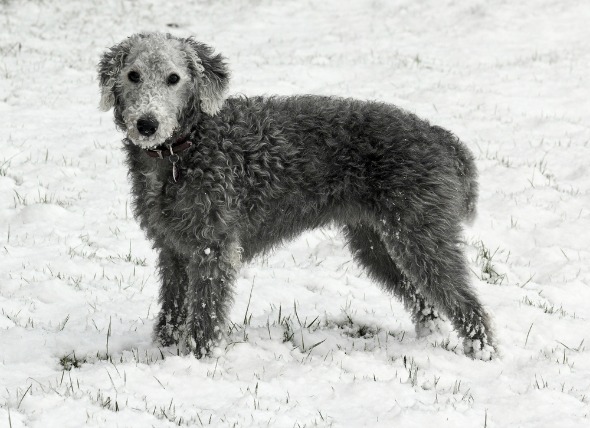
Hemoglobin is an oxygen carrier in the red blood cells, which also serves to carry oxygen to the tissues, as well as the pigment that makes the blood appear red. The destruction of blood cells within the blood vessels frees hemoglobin into the blood plasma (the straw colroed liquid matter of the blood), where it binds with haptoglobin, a blood plasma protein which functions for the purpose of binding with free hemoglobin to prevent the loss of iron from the body. When all of the haptoglobin has been used up, hemoglobin spills over into the blood, binding reversibly to blood proteins and changing the color of the plasma from a faint yellow to pink. The unbound hemoglobin is then cleared through the kidneys.
Myoglobin serves the same purpose as hemoglobin but is particular to the muscles, and is differentiated by the amount of oxygen and carbon monoxide it delivers to the tissues (more, and less, respectively). Muscle damage releases myoglobin into the blood plasma, but it does not bind to serum proteins. Consequently, plasma color does not change, and the myoglobin is quickly cleared from the blood by the liver and kidneys. If there is too much hemoglobin and myoglobin in the blood plasma, these proteins will no longer be reabsorbed in the kidneys, and will instead spill over into the urine.
Not only can hemoglobin and myoglobin damage the kidneys, but their presence in the blood indicates low oxygen-carrying capacity, which can result in liver damage, serious illness, and shock, all of which serve to further decrease the amount of oxygen available to the body through the muscles and blood. In addition, the destruction of red blood cells inside the blood vessels, along with severe muscle damage, can bring about disseminated intravascular coagulopathy (DIC), an often fatal blood clotting disease.
Some of the possible causes for hemoglobinuria and myoglobinuria are listed here.
Your veterinarian will perform a thorough physical exam on your dog, taking into account the background history of symptoms and possible incidents that might have precipitated this condition. You will need to give a thorough history of your dog's health and recent activities. A complete blood chemical profile will be conducted, including a complete blood count, and a test to measure for toxic levels of copper and zinc concentrations. Your doctor will also probably take a blood smear to look for irregularities of the red blood cells, and may also use the ammonium sulfate test to detect hemoglobin or myoglobin presence in the blood.
A urinalysis to look for bilirubin in the urine is another test that will be necessary for pinpointing the exact cause of the condition. Bilirubin is a red-yellow bile pigment that comes from the degradation of the red pigment (heme) in hemoglobin; too much bilirubin cannot be processed by the liver and will spill over into the urine. Excess bilirubin in the blood is also the cause of yellowing of the skin and eyes.
Radiographs and ultrasounds are useful tools for visualizing the liver in case of copper-associated liver disease, or to reveal swallowed coins or cage bolts/nuts – both of which are common sources of zinc or copper poisoning.
The medications that are prescribed will depend upon your veterinarian’s final diagnosis of what is underlying the symptoms. If the condition is severe, your dog will be hospitalized for stabilization and fluid rehydration.
Your veterinarian will advise you on when you will need to return with your dog for follow-up appointments. There may be further need for a blood chemistry profile, a complete blood count, urinalysis, packed cell volume (PCV) test, and an arterial blood gas analysis. Genetic diseases are generally incurable, but can sometimes be managed by taking certain precautions with your dog. For example, neonatal isoerythrolysis, a congenital condition which results in the destruction of red blood cells, can be prevented by not allowing greyhounds with exertional myopathies (muscle diseases) to race; restricting exercise in Old English Sheepdogs with exertional lactic acidosis (abnormally high levels of acids in the blood); and not allowing Bedlington and West Highland White Terriers with copper-associated liver disease to come into contact with copper.
 Cirrhosis and Fibrosis of the Liver in Dogs
Cirrhosis of the liver is the generalized (diffu
Cirrhosis and Fibrosis of the Liver in Dogs
Cirrhosis of the liver is the generalized (diffu
 Liver Inflammation (Chronic) in Dogs
Chronic, Active Hepatitis in Dogs
Hepatitis, a me
Liver Inflammation (Chronic) in Dogs
Chronic, Active Hepatitis in Dogs
Hepatitis, a me
 Thickening of the Uterus Lining and Fluid-filled Sac in Dogs
Pyometra and Cystic Endometrial Hyperplasia in Dogs
&nbs
Thickening of the Uterus Lining and Fluid-filled Sac in Dogs
Pyometra and Cystic Endometrial Hyperplasia in Dogs
&nbs
 Anemia (Methemoglobinemia) in Dogs
Methemoglobinemia in Dogs
The purpose of hemoglob
Anemia (Methemoglobinemia) in Dogs
Methemoglobinemia in Dogs
The purpose of hemoglob
 Perineal Hernia in Dogs
When the muscles in the pelvic diaphragm of an an
Perineal Hernia in Dogs
When the muscles in the pelvic diaphragm of an an
Copyright © 2005-2016 Pet Information All Rights Reserved
Contact us: www162date@outlook.com